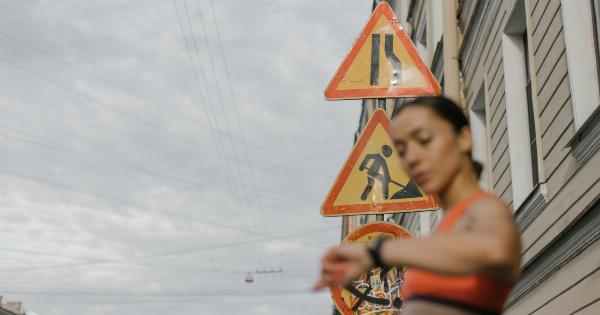When we think of digestive issues, many of us automatically think of problems with our stomachs or intestines. However, our digestive system is complex and involves many different organs and structures.
One of these crucial components is the bile duct, which plays a critical role in breaking down and absorbing fats. When something goes wrong with the bile duct or the production of bile, it can lead to a range of symptoms and health problems. Here are six common symptoms of a bile disorder:.
1. Jaundice
Jaundice is a condition where the skin and whites of the eyes turn yellow. This happens when there is an excess buildup of bilirubin, a yellow pigment, in the blood.
Bilirubin is formed when red blood cells break down, and normally, it is processed by the liver and then excreted in bile. If the bile ducts are blocked or there is another issue with bile production, bilirubin can accumulate in the blood, leading to jaundice.
Jaundice can be a sign of a serious underlying health condition, and anyone with yellowing of the skin or eyes should seek medical attention.
2. Abdominal Pain
Abdominal pain can be a symptom of many different health issues, including bile disorders. Pain in the upper right quadrant of the abdomen, just below the ribs, can be a sign that something is wrong with the bile duct or liver.
This pain may be sharp or dull and may be accompanied by other symptoms like nausea or vomiting. If you experience persistent abdominal pain, it is important to speak with your doctor to determine the underlying cause.
3. Nausea and Vomiting
Nausea and vomiting are common symptoms of many digestive issues, including those related to bile disorders.
When the bile duct is blocked or not functioning properly, it can cause a buildup of bile in the stomach, which can lead to queasiness and vomiting. Nausea and vomiting can also be a sign of more serious health issues, so it is important to seek medical attention if these symptoms persist or are accompanied by other symptoms.
4. Fever and Chills
Fever and chills are both signs of inflammation or infection in the body. When there is a problem with the bile duct or liver, it can lead to inflammation or infection, which can trigger a fever.
Chills may also occur as the body tries to regulate its temperature in response to the fever. If you have a fever or chills along with other symptoms like abdominal pain or jaundice, it is important to see a doctor right away.
5. Itching
Itching can be a symptom of many different health issues, and when it is related to a bile disorder, it is usually caused by an excess buildup of bile salts in the skin.
These salts can irritate the skin and cause intense itching, especially in the hands and feet. Itching can be a frustrating symptom to deal with, but it is important to avoid scratching as much as possible to prevent further irritation or infection.
6. Light-Colored Stools
Stools that are pale or light-colored can be a sign of a problem with the bile duct or liver.
Bile is responsible for giving stool its characteristic brown color, so when there is a blockage or issue with bile production, stools may appear lighter than normal. Anyone who notices significant changes in their stool color or consistency should speak with their doctor to determine the underlying cause.




























